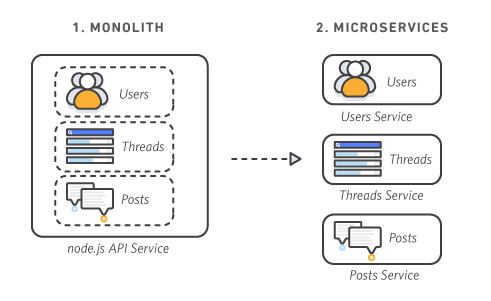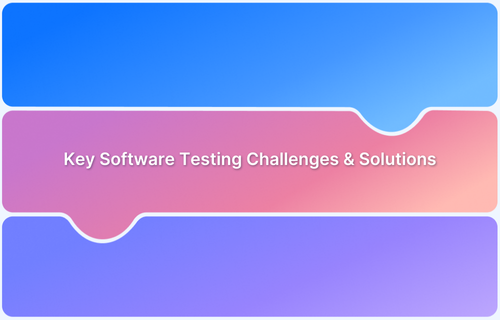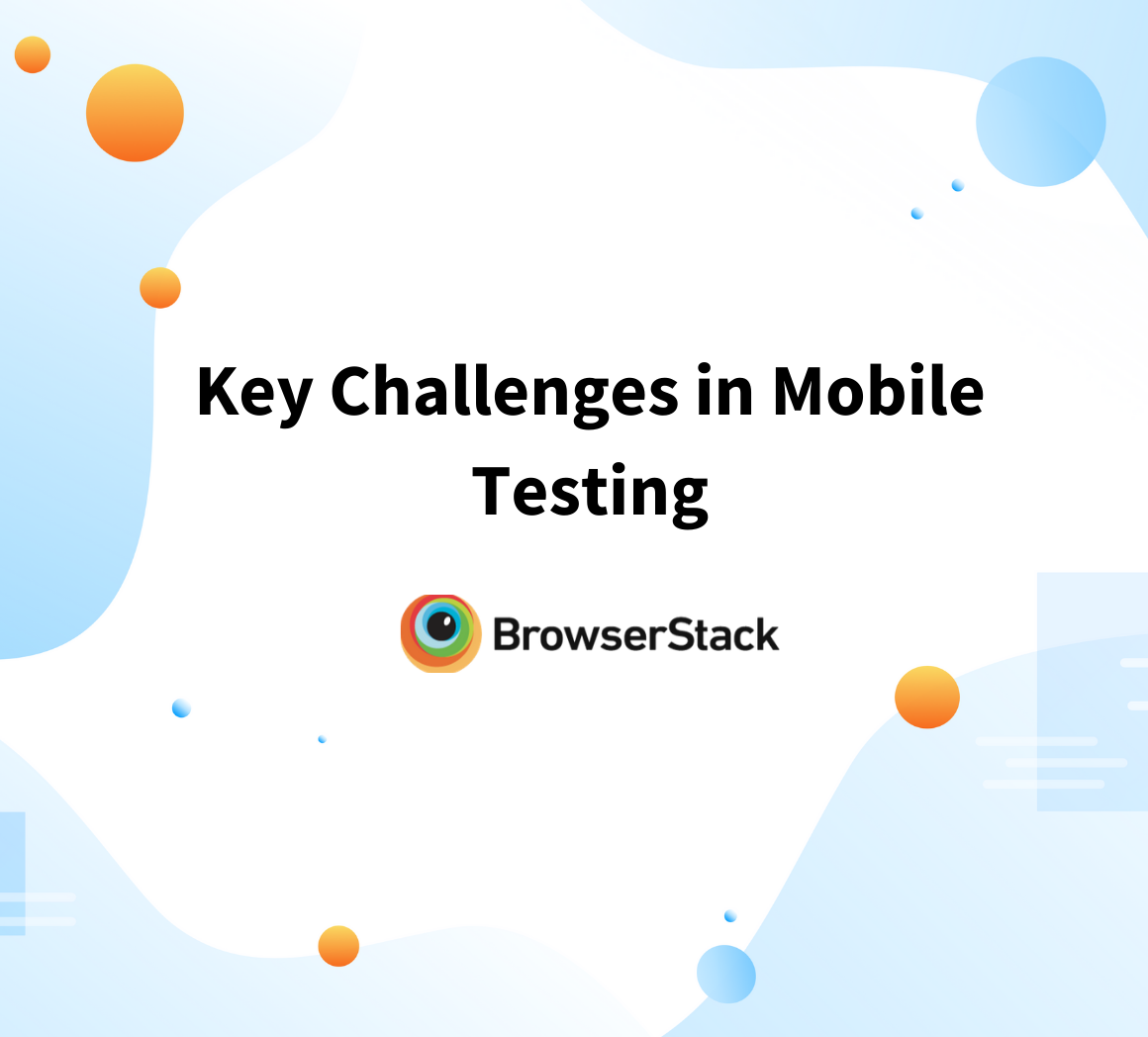End-to-end microservices testing is a strategy that ensures that individual services within a microservices architecture work together as expected in a complete workflow. It verifies the interactions between services, data flow, and system behavior across components.
End-to-end microservices testing helps:
- Ensure smooth communication between independent services
- Improve the overall performance and reliability of the system
- Detect issues early and prevent costly fixes
- Maintain application stability as services are updated or replaced
This article will explain the meaning of microservices testing, and its different types, benefits, and challenges.
What is Microservices Testing?
Microservices testing is the process of validating each service in the microservices architecture to ensure it functions properly both within the system and independently. This includes unit testing for individual service logic, integration testing to verify the communication between services, API testing for data exchange validation, and end-to-end testing to simulate real-world workflows.
Source: Amazon
Types of Microservices Testing
Microservices testing includes several testing types to ensure the individual services and their interactions perform correctly. These include:
- Unit Testing: Focuses on testing individual components of a service to verify that specific functions or methods work as expected.
- Integration Testing: Verifies the communication and data exchange between different services, ensuring they integrate seamlessly.
- API Testing: Ensures that APIs expose the right functionality and handle requests and responses as expected.
- End-to-End (E2E) Testing: Simulates real user scenarios to validate the system’s behavior across multiple services, ensuring the entire workflow functions smoothly.
- Component Testing: Focuses on testing a specific service or component in isolation, checking that it performs its intended tasks without relying on other services.
- Contract Testing: Validates that services comply with predefined API contracts, ensuring compatibility and reducing integration issues.
- Load Testing: Assesses how services perform under different levels of traffic, ensuring they can scale and handle high demand.
- Fault Tolerance Testing: Tests the system’s ability to recover from failures, ensuring that services can handle errors without affecting the overall application.
How do Microservices work?
Microservices is an architectural style for building software applications that are composed of small, independent, and loosely-coupled services. Each service is designed to perform a specific task or function and communicates with other services using lightweight protocols, such as HTTP or message queues.
Microservices work by breaking down a monolithic application into smaller, independently deployable services. Each service is designed to be self-contained and to have its own data storage, business logic, and user interface. Services are often deployed in containers or virtual machines, which provide a lightweight and portable way to run the services.
Benefits of an End-to-End Microservices Architecture
Here are a few reasons why microservices architecture is important:
- Autonomous Development: Instead of having one very large team and project, which is hard to manage, microservice architecture lets you break down your team and code into self-sufficient groups. Teams work and deliver autonomously, leading to a clear delineation of responsibilities and independent work priorities.
- Functional Specialization: When modules are identified based on business needs and proper team structure is implemented, each team becomes a specialist in their functionality domain. This is also helpful during defect analysis.
- Dynamic Resource Allocation: With modern cloud platforms offering on-demand scaling for your application infrastructure, microservices on cloud platforms let you fine-tune for the ultimate resource optimization strategy.
- Plug and Play: Agile development with microservices enhances the ability to add or remove modules from the application without downtime, which is helpful in scenarios where rapid feature addition is needed in the SDLC.
- Application Agility: Since the application is not a single monolith, one non-critical failing component generally will not affect all the other working parts, rendering the application more agile in failure scenarios.
In a CI/CD environment, a properly implemented microservices architecture helps the technical leadership track overall progress. All the steps beyond code committed by developers are automated and trackable through dashboards and other communication tools. This helps increase product quality, release speed, debug rate, system stability, and overall customer experience.
When a contribution is merged in the master repository, chain events are triggered, including testing at all levels. If tests break, the whole CI/CD pipeline could potentially stop, and fixing the issue could take time. In some cases, microservices architecture tends to increase the complexity of the problems. Let us try to understand how these challenges pop up.
Unit and Integration Testing of Microservices
Unit tests are the first amongst various layers in application testing. It means testing individual functions of code by writing test code. As you move up the layers of testing the number of test cases tends to decrease in number but increase in cost and complexity, so testing as much as possible at the level of unit testing is the goal of every honest and dedicated developer.
Source: OnPath Testing
Integration tests are the next layer where unit tests and app functionality are grouped based on broader business functions and tested in batches. Writing unit tests involves a fair deal of back and forth as it requires the developer to not only write the test case once, but also to prepare mock input data and external service responses as unit testing is not connected to live DB and services, and also updating all this whenever any change to original function occurs.
Challenges in End-to-End Microservices Testing
There are several challenges in end-to-end microservices testing, including:
- A CI/CD flow with a number of microservices integrated into a few streams is a commonly occurring scenario. Consider one module with a breaking set of tests has the potential to cause the CI/CD to come to a halt.
- The number of reasons why unit tests fail is so vast. In an environment with dependencies spanning multiple modules and teams, it could take hours or even days to figure out what broke because of the chain reaction effect.
- It is a typical scene to find out tests breaking in one module due to recent updates in another module. Because of the separation of concerns and internal competition within teams, developers will find it hard to spend time and effort on or co-operate in fixing errors in modules not owned by them.
- While mocking live services from things like payment, booking providers, or external data sources, it is essential to capture all the nuance of the contract and test for edge scenarios.
- With an accelerated push to develop newer functionality, developers will find it hard to focus on unit test coverage. The application complexity will multiply. Consequently, it gets more and more challenging to go back and maintain a high-quality test package over time.
This could lead teams to be negligent of unit testing, as, with increasing complexity, the effort starts requiring too many resources. It’s not uncommon for the leadership to say that the juice is not worth the squeeze and cut down heavily on unit and integration tests, which is a short-term gain for a potentially high long-term cost.
A few suggestions to avoid these challenges:
- A straightforward way could be to layer code modules and test suites based on the priority of flow, i.e. test suites for core business flows are more important than others, and to change and modify code for core business flows, you would need more experience and approvals.
- For unit and integration testing, it is advisable that the strategy for writing and executing tests be designed to accommodate the possibility of complexities arising in the future. Also, the test reporting system could be configured to mark test severity appropriately such that only very important flows are set to break a delivery/deployment push.
- It is the job of technical leadership to define solutions to and manage potentially complicated problems like changing external service contracts or highly branched dependencies and make sure all developers are up to date with proper documentation.
Testing Strategies for Microservices
Testing strategies in a microservice architecture need to be different from traditional monolithic architectures. Here are some testing strategies that are commonly used in a microservice architecture:
- Unit testing: Unit tests are written to test individual services in isolation. This is the most basic type of testing and helps to ensure that each service is working as intended.
- Integration testing: Integration tests are written to test how services interact with each other. This type of testing helps to ensure that services can communicate with each other correctly and that they are integrated properly.
- Contract testing: Contract testing involves testing the contract between services. In a microservice architecture, services often communicate using APIs. Contract testing ensures that the API contract is adhered to by all services.
- End-to-end testing: End-to-end testing is a type of testing that tests the entire application from end to end. This type of testing helps to ensure that all services work together as intended and that the application is functioning as a whole.
- Chaos testing: Chaos testing involves intentionally causing disruptions to the system to see how it reacts. This type of testing helps to identify weaknesses in the system and ensures that the system is resilient.
- Performance testing: Performance testing involves testing the system’s ability to handle a large number of requests. This type of testing helps to ensure that the system can handle the expected load.
Testing strategies in a microservice architecture are focused on testing individual services in isolation, testing the integration between services, and testing the system as a whole. These strategies help to ensure that the system is functioning as intended and is resilient to disruptions.
Team Management while Developing Microservices
One of the biggest challenges associated with building tech products on microservices architecture is the structure and management of teams working on it, and the complexities arising out of that. The main reason for wanting to implement microservices architecture is to supercharge the development process for a rapidly evolving product.
Read More: How to Engage and Manage a QA Team
In a fast-growing startup where changes are coming in daily along with new business and user scenarios, and you are looking to maximize the speed and efficiency of the dev process, that is where microservices are most beneficial. But beneficial only if implemented and executed properly.
If your team is not in sync with your overall technical standards specification, or if there are holes in your specification plan itself, it is easy to find folks struggling to deliver even at average speeds and quality while maintaining an overhead of a bloated delivery line.
Here is How Challenges Usually Come Up:
- When you have a system set up afresh, the complexity is usually manageable, but once you start building modules on top of that, it goes up exponentially.
- As complexity rises, it is the job of technical leadership to observe, understand and control it. If the tech leadership can wrap their heads around what is going on, they can only guide the developers to do the right thing. But if the leadership fails to do so, turbulent times are more likely to come.
- If leadership fails to contain complexity, it usually leads to a scenario where no one has a 100% picture of what is happening. Resulting in developers having less than ideal command over the application.
- In such cases, things break in unpredictable ways. Imagine ghost service calls and unnecessary batch processes running without proper monitoring or syntax errors and memory leaks causing heavy resource consumption for no reason or some random breakage in non-essential areas causing critical flows to break.
- After something breaks and causes trouble, finding the actual point of error and assigning responsibility is trickier.
Avoiding Team Challenges While End-to-End Microservices Testing
- Although it is desirable to set up the dev sub-teams to work asynchronously and independently to maximize productivity. You have to ensure that it does not come at the expense of clear responsibility and task allocation within the team. Clear communication regarding critical changes within teams has to be ensured. Plus, a strong culture of writing proper code syntax, with comments and documentation being enforced as a standard within the development team.
- It is recommended that the business and tech leadership work in close synchronicity and ensure minimal confusion regarding the current and future needs of the tech product so that they have a chance to clean up and contain issues. More often than not, we see an over-optimistic business analysis overwhelming a dev team with requirements that don’t even result in any significant improvement or functionality at the user’s end.
- Using automated black-box tests is a strong way to ensure application functionality on the user’s side without diving deep into code issues.
Browserstack Automate lets you run your UI test suite in minutes with parallelization on 3000+ real browsers and devices. Test on every commit without slowing down releases and catch bugs early.
Try Parallel Tests On Real Devices
Tracking and Fixing Issues in End-To-End Microservices Testing
If the leadership fails to fix product and team issues early on time, they will inevitably lead to bugs in customer sessions and cause problems. After an issue is detected by QA and the product team is notified, they are expected to revert back with a report on the cause and fix it in the least amount of time.
Here again, we see the complex nature of microservices architecture and distributed team structure creating some more challenges:
- In a scenario where the structure of the application loses proper form and is plagued by bad code when a functionality breaks, QA does its job normally, but for the developer, it gets harder to detect the root cause due to a lack of code comments, documentation and proper syntax.
- Due to dependencies, one breakage may lead to a cascade of breakages, which requires an even deeper debug analysis, generally causing more time. This causes the detection of the error part on the dev side to be slightly or significantly delayed.
- In a situation where multiple things break, it’s easy to see finger-pointing among team members, where developers not having a deep understanding of the code package will further delay the detection process.
- When the issue is finally detected and resolved, updating the unit, integration and other test scripts for that functional portion of code still stands as an added task for the responsible developer.
- After all the accumulated delays due to back and forth between QA and developers, it is easy for the business team to lose consideration for the complicated nature of the tech process and become increasingly hostile, causing tension within the team.
This is the worst nightmare for all tech leaders to see their teams descend into dysfunctional modes. And for the business leadership, this could be an even worse disaster when the expensive tech resource pool seems unable to command customer confidence and appreciation as per their expectations.
You can solve these challenges in end-to-end microservices testing by:
- Put in extra effort during the growth phase to keep the business analysis, experience design, quality assurance, and development teams in sync.
- Document, log and monitor communication between all systems and participants because evidence serves better than people’s claims.
- If there is any mistake or miscalculation at the level of system architecture or CI/CD design or implementation, it is better to halt the process and fix the core issue first even if it is detected after writing a fair bit of code on top of it.
- Try building a culture where human factors are clearly understood, and interpersonal equations running both directions in a hierarchy are managed justly.
- Cooperation and helpfulness within a team should be acknowledged and awarded.
The challenges mentioned here are not simple and require dedicated analysis and case-specific study to optimally resolve them in real life. And also the variables of every team and product are different, so what works for one might not even be a viable option for another. Larger teams and enterprises can choose to use a cloud-based testing tool built especially to meet their testing requirements. BrowserStack for Enterprise facilitates enterprise-wide agile testing that allows teams to ship products continuously, at scale.
Read More: Guide to Enterprise Test Automation
In a case where all attempts to prevent such issues do not bear fruit, and you unwillingly land in the dreadful scene of having to fix a broken system, there are still ways to do it.
It might seem reasonable to some and controversial to others, but I can assure you that many companies already in the past, during many moments of downtime where the only priority was to have the working product back online, have ended up doing this, i.e. prioritize Black-box testing on production environment and keep the white-box tests for testing environments and only very critical flows in production.
That way, you can develop new functionality and components for the production environment without having the added responsibility of making the unit and integration tests work every time you add something. While far from ideal, this could be adopted in an emergency or difficult situation where feedback from a select group of users is more helpful than your QA strategy.
Conclusion
We recommend all product development and management process participants be aware of and actively work to avoid these pitfalls to benefit from a well-designed end-to-end microservices ecosystem. While challenges may pop up in your end-to-end testing, it’s crucial to be subjective and have a pinpointed approach that is fast, responsive, and highly integrated within the ecosystem.
Read More: Stages of Development Sprint Cycle







